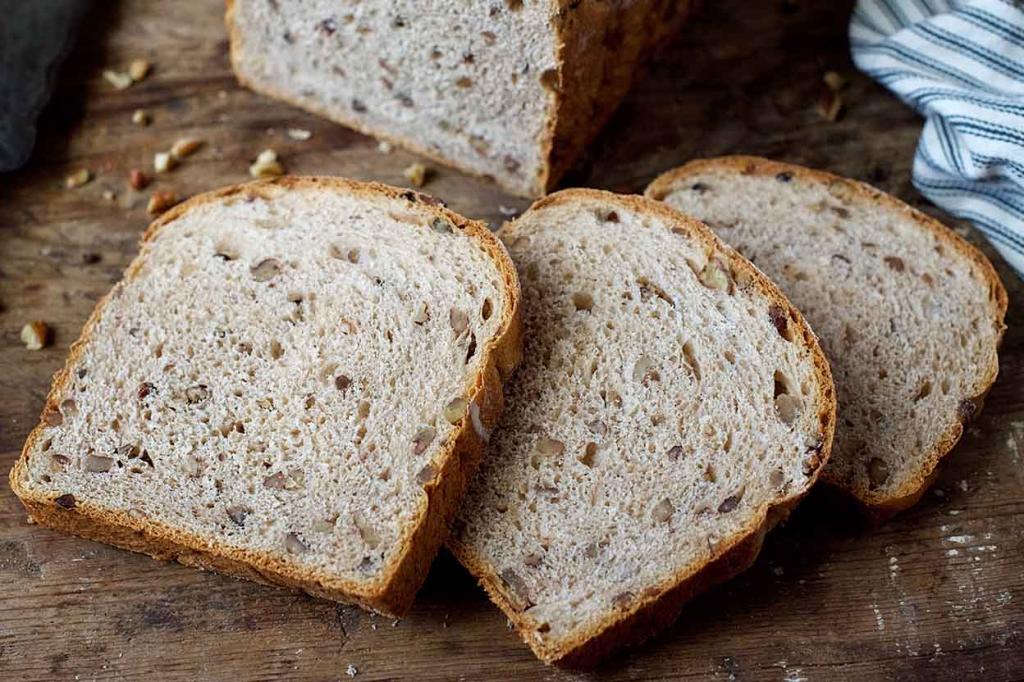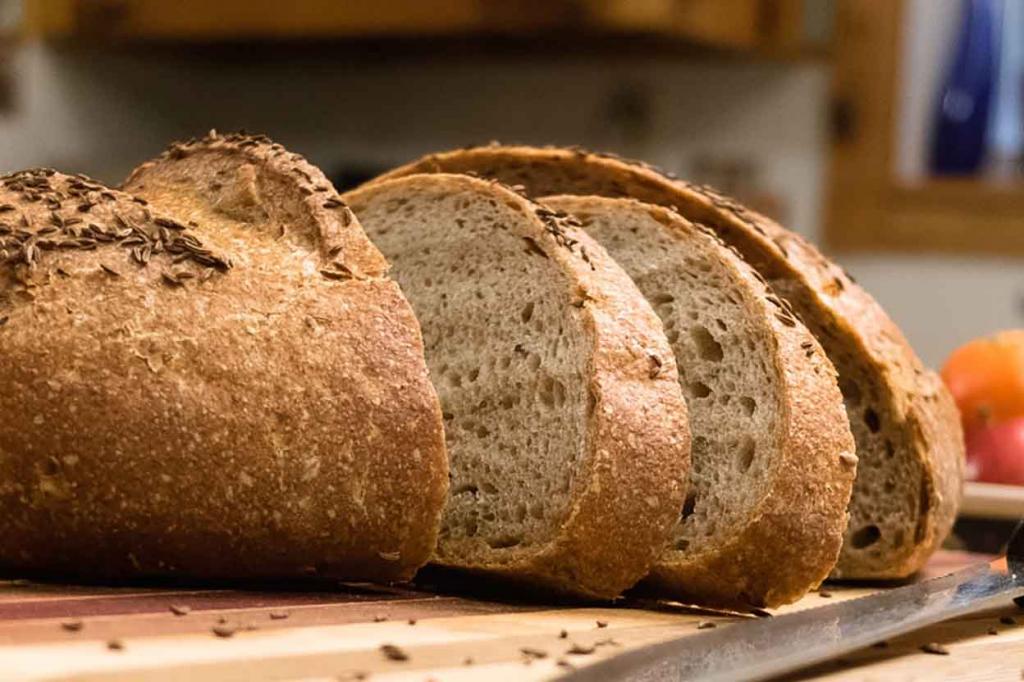A healthy lifestyle is not just a fashion, but a real need in the modern world. Every day, athletes and nutritionists develop new methods for weight loss, and advanced advertisers make this a true cult. To date, any professionally composed dietitian menu will not do without taking into account the glycemic index, although many young people do not even know about its existence.
In this article, you will learn about the concept of GI, and how high can be the glycemic index of bread as one of the most consumed products in Russia.
The concept of glycemic index
At its core, GI is the degree of influence of a glucose-containing carbohydrate product on the human body. High GI means rapid breakdown of blood sugar, which can negatively affect the process of losing weight. This indicator is not the latest discovery by nutritionists, since people with diabetes have been using it for a long time to control the level of glucose in the body. However, the notorious marketers could not resist and promoted the concept and importance of GI in the wake of proper nutrition and a healthy lifestyle.

The use of GI in everyday life
When calculating the GI, glucose is taken for 100% and indicators for each carbohydrate product are calculated from it. This index is expressed in the following groups:
low index (0-40);
average index (40-70);
high index (70 and above).
As a rule, simple carbohydrates are part of high GI foods. These trace elements are quickly broken down in the body and give a high jump in blood sugar. These products include: fast food, sweets, flour products and carbonated drinks. Simple carbohydrates not only negatively affect the production of insulin in the human body, but also slow down the metabolism, thereby preventing weight loss. You should avoid foods with a GI above 70 to keep fit.
Complex carbohydrates have medium and low GI. This means that such foods slowly increase the level of glucose in the blood, thereby allowing a person to feel full and energy for a long period of time. In the process of losing weight, it is necessary to focus on complex carbohydrates and include them in the daily diet, combining with protein products.

Glycemic index of bread
It is worth recognizing that it is undesirable to use any wheat product during a low-carb diet, even despite the GI norm. The glycemic index of bread directly depends on its composition, possible additives and formulation. For example, in the West, on the shelves of huge supermarkets you most likely will not find ordinary brown bread, because honey, dried fruits, mustard or all kinds of seasonings will certainly be added to the American counterparts. It is necessary to pay tribute to the Soviet food culture, which instilled in people a healthy and nutritious diet without consuming a huge amount of "food waste."
White bread
The glycemic index of white flour bread is about 80. This parameter may fluctuate due to the difference in the recipe and the method of preparation of the producers. It is because of the high GI that nutritionists recommend excluding this product from the daily diet, not only for losing weight, but for everyone who does not need fat deposits in the area of problem areas. White bread consists entirely of fast carbohydrates, which are instantly absorbed into the bloodstream, because of which a person feels hunger and some kind of weakness.
It is worth noting that white bread is better to replace with black or diabetic bread, which consists of fiber and complex carbohydrates.

Rye flour products
The glycemic index of brown bread is about 50-60, depending on the composition. In general, this product has an average degree of glucose load on the body, but nevertheless, brown bread should be consumed in moderation and with a certain frequency. However, the glycemic index of rye bread and nutritional value make this flour product quite healthy. Many nutritionists recommend it for people with diabetes, for a number of reasons:
fiber content at a high level, which allows you to establish a housing and communal services system;
bread contains beneficial amino acids and vitamins;
a sufficient content of iron and magnesium, which not only prevent nerve surges, but also increase the level of hemoglobin in the blood.
The glycemic index of Borodino bread is only 45, and its usefulness for the body is incomparable. In addition to the main advantage - low calorie content, this bread contains selenium, which helps the thyroid gland and the cardiovascular system. Borodino bread is a real find for women's health.
It is interesting to know that GI can be determined by the color of the flour product. The darker the bread, the lower the GI. But due to the increased acidity of dark bread, nutritionists recommend not using a flour product with red meat, so as not to complicate the digestion process. This product is best combined with a light evening salad and a drop of olive oil.

Bran bread
This flour product is bread with a low glycemic index of 45. It is because of this indicator that the product is popular among people with diabetes. Manufacturers, as a rule, use rye flour with the addition of various bran. There is a high level of fiber in bread, which allows carbohydrates to slowly break down and stabilize blood sugar. This process provides rapid weight loss and accelerates metabolism. Also bran bread has the following healthy symptoms:
high content of vitamin B;
normalization of the intestinal tract;
increase immunity;
lowering unwanted cholesterol levels;
Does not cause bloating or heaviness in the abdomen.
It should be noted that constantly eating bran bread is also not worth it, because, first of all, it is a flour product. Also, this product can be made from wheat flour, which automatically increases the GI. Before purchasing bread in a supermarket, it is worthwhile to study its composition in detail.
Whole Grain Flour Product
Many athletes and coaches add whole grain bread to their diet. And this is not surprising, because the product consists of bran and whole grains. However, many manufacturers add top-grade flour to the composition, which makes this bread unsuitable for a low-carb diet. The glycemic index of whole grain bread without the addition of wheat or rye flour varies from 35 to 45. In addition to low sugar content, the product is useful for diabetics and people with chronic heart diseases, and with obesity of any type. Whole grain bread is also popular among young people, since most modern diets use a small amount of this product.
It is worth noting that in the presence of serious problems with the housing and communal services system, it is better to refuse whole grain bread, since a high fiber content can harm the full functioning of the intestines.
In general, whole grain bread is a magical source of essential trace elements, vitamins and amino acids to keep the body in good shape, and the figure is normal.

Yeast-free bread
In fact, the glycemic index of yeast-free bread can be different, since the recipe for preparing the product is different for different manufacturers of brands. The yeast used in baking significantly speeds up this process, but the benefits of adding them no longer become. It is best to eat bread, which is prepared by the starter method, which can reduce the GI of the flour product and increase the level of various vitamins, healthy bacteria and other trace elements.
In the process of losing weight, you must avoid the use of products containing yeast.

Alternative to bread
The shelves of large supermarkets are filled with bread rolls of various brands in assortment and with interesting flavors: poppy seeds, bell peppers, garlic, tomato, Italian and Provencal herbs. This product is positioned as a diet, but is it really so? In fact, the glycemic index and calorie content of the bread directly depends on the flour that is added to the composition. So, the GI of wheat bread can vary from 65 to 80, and rye bread, as a rule, has a glucose value of 40-45. The advantage of this product over ordinary bread is that in most cases the yeast is not included in the composition of the bread.

In general, such an alternative to bread contains a high level of fiber, vitamins, protein and complex carbohydrates, which makes the product an ideal helper in the process of losing weight.